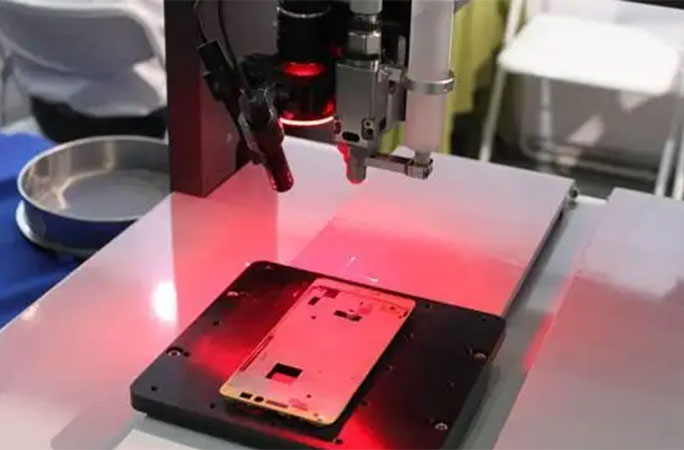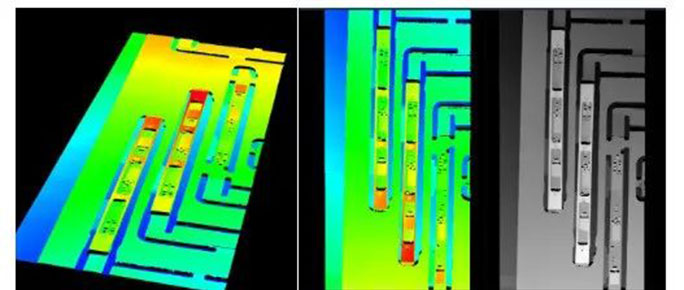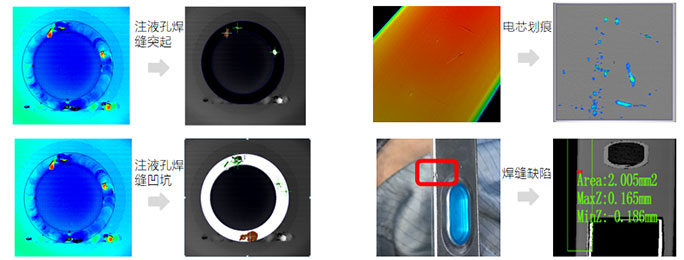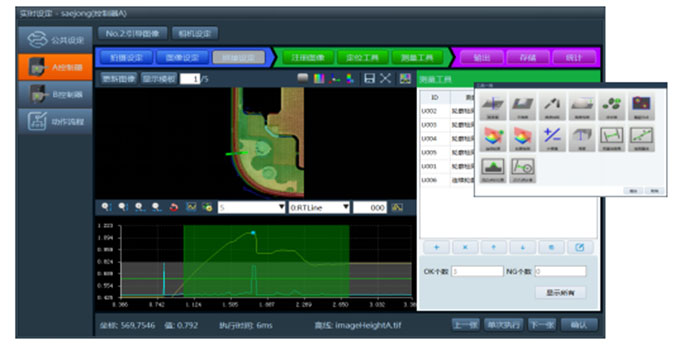
In industrial manufacturing, in order to avoid the influence of moisture, dust, harmful substances, or temperature, many industries have important production processes for gluing, such as automotive manufacturing, 3C consumer electronics, lithium battery industry, and some daily factory enterprises.
The quality of the colloidal coating and the precision of dispensing are directly related to the quality of the product. Therefore, dispensing guidance and testing are essential parts of the production process.

Huahan Weiye's HyperShape3D measurement software, mainly used fortolerance measurement, adhesive guidance, defect analysisthrough scenario automation, high-precision and efficient dispensing guidance and re inspection can be carried out, helping manufacturers in the adhesive industry to solve long-standing adhesive problems and reduce costs and increase efficiency.
At present, the software has been widely applied in the adhesive guided testing industry, accumulating rich industry experience.
The process flow of the adhesive guided testing industry is mainly divided into three steps:Collecting 3D images+adhesive guidance+adhesive path re inspection。
Huahan's 3D detection software has been upgraded and transformed to meet the needs of the adhesive guided detection industry. A total of 16 adhesive detection tools, 8 point finding tools, 9 measurement tools, and 5 appearance defect detection tools have been developed. All detection tool parameters are simple and flexible, and can flexibly respond to problems that occur during the adhesive application process.
After the workpiece is loaded, a professional 3D camera is used to scan and collect the 3D point cloud map of the workpiece. After setting various parameters, the software interface can display the processed 3D image, and the workpiece border and adhesive line can be presented very clearly.
And it can obtain both height and grayscale images simultaneously, which can be used for correcting the position of characters and markers. These two images can be corrected even in areas without shape features such as height differences, and have a wide range of applications.

The "3D guidance" function in 3D detection software can accurately locate the position of the workpiece adhesive path, and 24 cross-sectional profile measurement tools ensure accurate finding of feature positioning points.
By collecting and locating information from 3D images, calculate the cross-sectional contour of the fixed position of the workpiece frame and the adhesive line, and calculate the position of the adhesive line relative to the workpiece frame on the contour.
As shown in the figure, taking the highest point of the phone frame as the reference point, the height difference between the highest point of the adhesive line and the highest point of the phone frame is calculated as the adhesive height data; The distance between the highest point of the adhesive line and the highest point of the phone frame is the position of the adhesive line; Glue width is a relatively stable width data for calculating the bottom width of the glue line.

The "Continuous Section Profile Tool" can guide the dispensing of glue on any glue path, including glue height, glue width, glue edge distance, glue weight, etc. The guiding accuracy can reach ± 0.05mm (straight edge), and measurement benchmarks can be flexibly set according to customer requirements.
After dispensing, it is necessary to conduct a re inspection of the adhesive path to determine whether there are any defects such as breakage, overflow, collapse, or accumulation. Defective products should be promptly removed to reduce the defect rate and avoid unnecessary quality problems.
The use of defect detection tools such as "freeform surface", "block like object", and "defect detection" in 3D software can identify the type of defect. When a defect is detected, the system will automatically calculate the image, area, position, size, and other information of the current defect, with a retest accuracy of 0.02mm.
Deep learning tools in 3D software can also be used in conjunction with traditional defect detection tools such as "block like" and "defect detection" to achieve the "secondary judgment" function of adhesive defects, achieving true zero leakage and stable detection of various adhesive defects.

3D inspection software can also collect inspection results in batches, accurately record the quality of each roll of material produced, and provide detailed records of defects generated during the production process, classify and summarize them, and output inspection reports, providing convenience for production processes and equipment, and more effectively ensuring the quality of products.
HyperShape3D, as a standard 3D measurement and detection platform software, has rich detection tools and simple and flexible configurations; The detection tools in the software can be freely and flexibly added, and the rich positioning detection tools can support complex guidance detection function requirements; A flexible software framework can also support rapid development and integration of customized functions.

The business configuration process of HANSWELL 3D detection software is very simple, only four steps are needed to achieve quick setting, and the detection tools are also very intuitive, making it easy to complete business configuration.
HyperShape supports network, serial port, DIO, and multiple PLC communication configurations; By writing scripts, the action process can be flexibly completed, adapting to complex and ever-changing scenes on site.

The HyperShape 3D visual analysis system focuses on utilizing 3D images and point cloud data, and adopts technologies such as surface reconstruction, point cloud registration, point cloud stitching, and five axis linkage spatial interpolation to achieve scene automation such as shape and position tolerance measurement, defect analysis, and welding guidance. It has good adaptability to products of different shapes.
Among numerous application scenarios, the application of Huahan 3D software has unique advantages compared to traditional algorithms. Minimalist design makes it easier for operators to get started; Simple parameters make debugging more convenient; Multiple detection tools can efficiently and accurately locate targets in various complex scenarios.